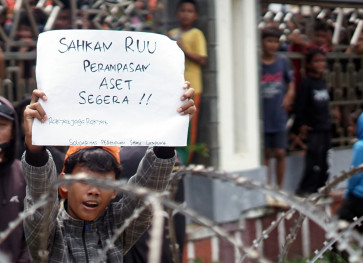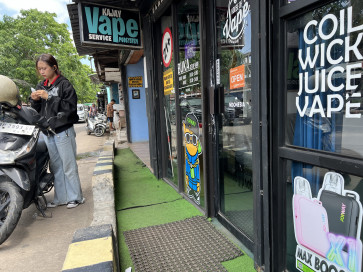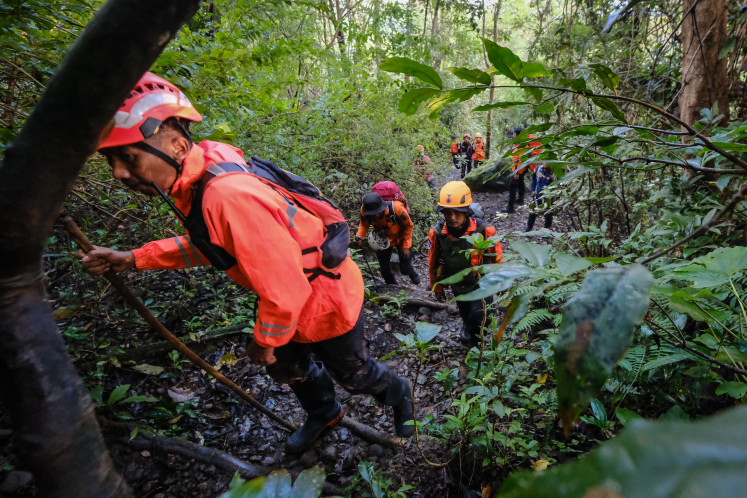Popular Reads
Top Results
Can't find what you're looking for?
View all search resultsPopular Reads
Top Results
Can't find what you're looking for?
View all search resultsAfter outbreak, Asmat in need of more medical specialists
The recent measles outbreak and malnutrition cases suffered by children living in Asmat regency in Papua have exposed the devastating fact that there has been a serious shortage of doctors in the regency ever since it was established 15 years ago
Change text size
Gift Premium Articles
to Anyone
T
he recent measles outbreak and malnutrition cases suffered by children living in Asmat regency in Papua have exposed the devastating fact that there has been a serious shortage of doctors in the regency ever since it was established 15 years ago.
The situation became apparent at Agats General Hospital in the regency’s capital of Agats on Friday. The hospital had been receiving patients from various districts in the regency in the wake of the outbreak that has killed at least 67 children. On Friday alone, 11 malnourished children from Atat village in Pulau Tiga district were admitted to the hospital.
The hospital has received additional medical specialists — four pediatricians, an internist and a surgeon — from the Indonesian Military and the Health Ministry to treat the stream of patients suffering from malnutrition and measles. However, on normal days, the Agats Hospital only has one surgeon as a specialist. “We are still short of doctors, considering it is difficult to get from Asmat’s districts to the capital to seek health services,” Asmat regent Elisa Kambu said on Friday.
As a D-type hospital, there must be at least four specialists: a pediatrician, an obstetrician, an internist and a surgeon.
Since the administration was first established in 2003, after being separated from Merauke regency, Asmat has been short of medical workers. There are currently 14 doctors, all general practitioners, serving in Asmat, a 23,746-square-kilometer area located in the southern part of Papua, with a population of 88,578 spread across 23 districts. Of those doctors, 10 are stationed in the Agats regional hospital, while the other four are assigned to community health centers in Agats, Suru-Suru, Primapun and Sasin districts.
Asmat actually had 16 community health centers but only four had a doctor on duty, which was not ideal, Elisa said. His administration had raised the issue with the Health Ministry, which responded with one new pediatrician who would be sent to Asmat at the end of this month.
In order to handle the situation itself, the regency has also given scholarships to five physicians to study a medical specialism, but they did not come back to Asmat. “Maybe because the agreement was not strong enough. They did not return after completing their studies, while they should have returned to serve here,” Elisa said.
Papua Health Agency secretary Silwanus Sumule said it was indeed hard to find doctors who were willing to serve in Asmat, a region of swamps that can only be accessed via longboat because the districts are divided by rivers.
Doctors serving in the regency would face distinct challenges, such as difficult terrain and limited health awareness among residents, he said. The administration has also provided high incentives: Rp 15 million (US$1,120) per month for general practitioners and Rp 50 million per month for specialists. “Only those who have big hearts to dedicate themselves in Papua are willing to stay,” Silwanus said.
The Indonesian Doctors Association chairman Daeng Muhammad Faqih urged the government to guarantee the health and safety of doctors serving in remote areas. In 2015, Dhanny Elya Tangke, a doctor serving in Oksibil district in Papua, passed away from malaria as he was evacuated too late because of geographical obstacles.
“Doctors are humans too, their safety must be guaranteed while serving in remote areas with high risks,” he said.
Hiring full-time doctors to serve in such areas was indeed not an easy task, University of Indonesia’s public health expert Hasbullah Thabrany said. “The government should create a rotation scheme to place doctors in remote areas, where doctors are offered short-term contracts before being replaced by someone else,” he said.
Indonesia has long been in short supply of medical specialists, with only 12.7 doctors per 100,000 people, according to data from the Health Ministry. (nmn)










